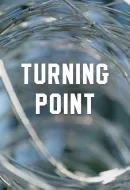In 1961, African American students from Friendship Junior College in Rock Hill, South Carolina, walked a mile to stage a sit-in at a segregated lunch counter. Their unconventional mission was to be put in jail and refuse to pay or accept bail to place a financial burden on local authorities. Their protest was known as “Jail, No Bail” and was replicated many times throughout the south. Until recently, the Friendship Nine was not recognized for their important role in the Civil Rights Movement in South Carolina and the nation.
Allan Miller, member of The Rock Hill Economic Development Corporation Board explains, “I think the way that this started was back in the late 1900’s, 1997, when the McCrory’s closed down. The building was open; there was some concern that we would lose the lunch counter at that time. I think up until that time, there was not a whole lot of notoriety that was coming to the Friendship Nine.” He continues, “I was serving on the Culture and Heritage Museum Board and if you know anything about the turn of the century, everybody was trying to decide what was the biggest thing that happened in the previous century? And after several interviews, several hours and days of research, they came up with the idea that probably the most significant thing, historically, that happened in York County and Rock Hill was the Friendship Nine and the beginning of the Civil Rights Era in South Carolina.”
To pay tribute to the Friendship Nine and other local heroes, the Freedom Walkway was created in Downtown Rock Hill. Drawing inspiration from the Friendship Nine being vacated of the sentences they received in 1961, Co-Artist of the Freedom Walkway, Laurel Holtzapple, explains how she and Co-Artist Juan Logan watched the video where “the judge opened up the docket book” and that the idea of opening the docket book was “the big idea for the walkway.”
The walkway allows people to reflect on the past, but living in a time of renewed racial tension, reminders are only the first step to progress. Kimberly P. Johnson, author of No Fear For Freedom: The Story of The Friendship 9, explains her feelings about the walkway. She says it's “a wonderful contribution to the cause but we can’t lose sight…we’ve got to go even deeper than that.”
Friendship Nine member David Williamson Jr. comments about change, “Change is hard. People don’t accept change as readily as they should but then, you shouldn’t expect them to either because when you’re brought up one way and that’s the only way you know… until you get involved with people, sit down and talk to them, you know and just have a conservation… then you find out everyone is the same.”
In order to evoke change, it is important to educate people, especially the youth, about the past. Without education, change cannot occur. But, with education, anyone can change the future. Kimberly P. Johnson says, “We are the MLKs…every single one of us has the components that made MLK who he is and what he was. Not to say that any of us can even say that we are such an iconic figure as MLK, but we all have pieces within us that can help set the foundation for creating change.”
---
This project was made possible by community volunteers, the National Endowment for The Arts, The York County Arts Council, and the Barry Mitchel Community Initiatives Fund.
